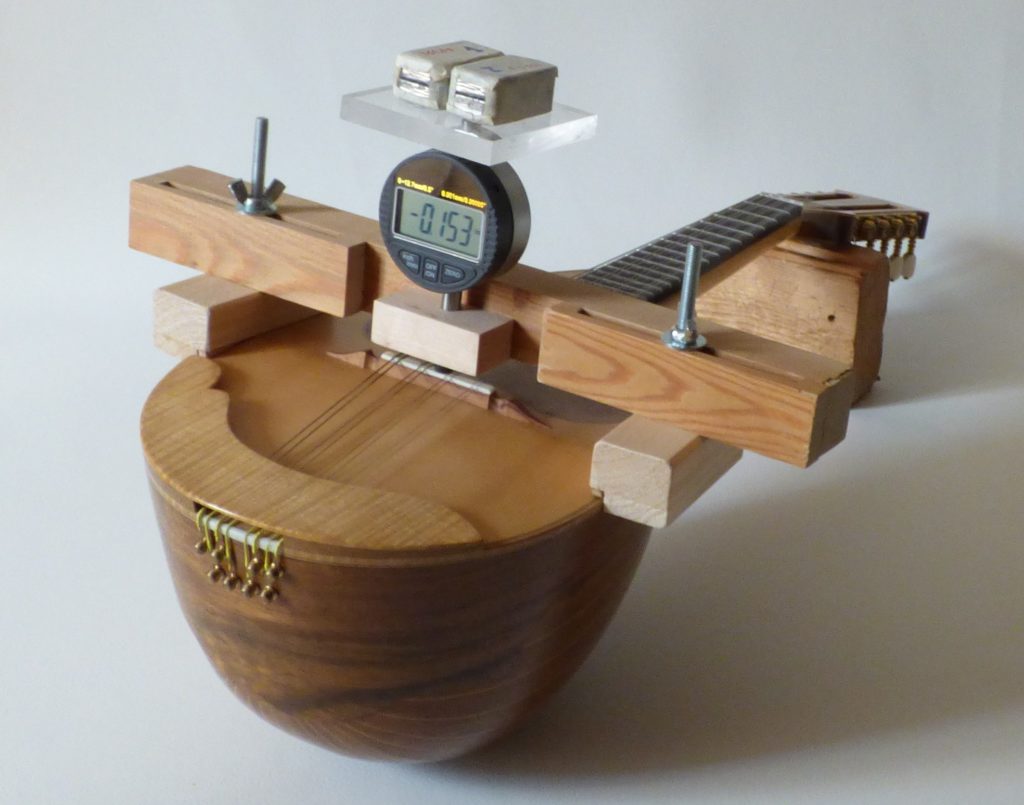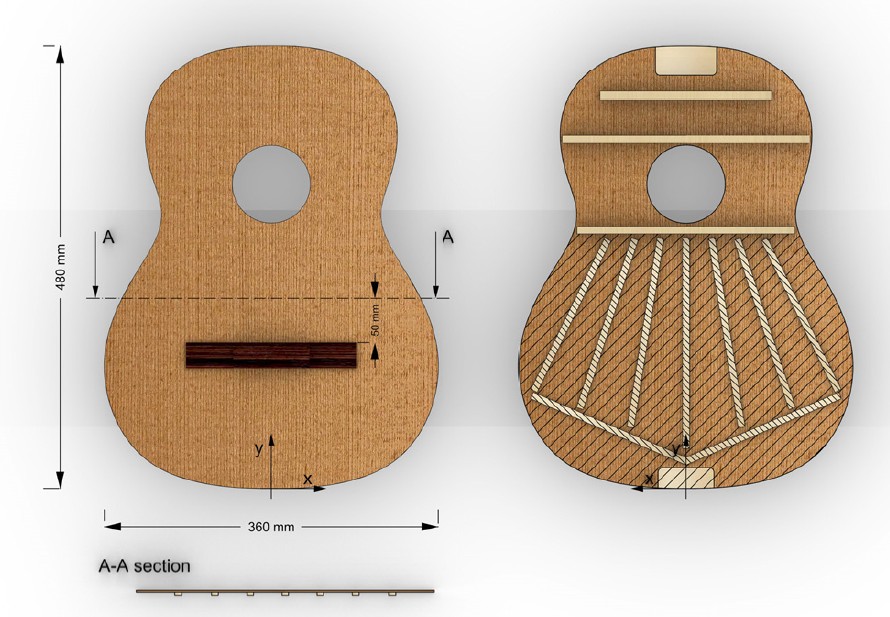Research and innovation
The instruments I make feature several innovative elements. Some of these are invisible at first sight but can be clearly noticed when the instrument is played.
These details come from research in musical acoustics and materials engineering.
My career in research began several years ago during academia, studying the properties of materials. My research is still going on in the field of lutherie and musical acoustics in the framework of research projects and collaborations with other luthiers and researchers.



Innovation in design and build of stringed instruments
These are some of the features that characterize the design and realization of my instruments:
Acoustic, modal and accelerometric analyses are powerful instruments that allow to understand the principle of operation of musical instruments and which are the “ingredients” that make them unique. Once these aspects are fully understood, it is possible to reproduce them in modern instruments and eventually improve or modify them to suit the needs of the musicians.
The materials used to build instruments are fully characterized in terms of acoustic performance. After being characterized, the best pieces are selected to build the instruments.
Thanks to the materials characterization, the soundboard thickness is univocally determined for every single piece of wood of each instrument, allowing for a reliable result and the maximum acoustic throughput.
The use of both traditional and composite materials (such as carbon fibre) allows me to push the design towards more efficient instruments without sacrifying the long term reliability.
The experience gathered during academia allows me to rely on simulations and measurements to verify each step during manufacturing and highlight the critical aspects to assess in order to achieve the desired result.
Research in musical instruments acoustics
An uniterrupted research activity is fundamental to realize contemporary instruments where aesthetics, acoustic efficiency and reliability can coexist.
During my career, I have carried out both academic and independent research in musical instruments and several collaborations with researchers and research institutions. At the moment I have has a post-doc position at the university of Bergamo where I study the acoustical characterization of musical instruments and the wood characterization with X-ray microtomography.
In 2019 I was awarded a research grant for the project “Choice of wood in musical instruments: Italian Red Spruce and traditional mandolins“.
Together with master luthier Federico Gabrielli and Claudio Canevari, researcher and teacher at Civica Scuola di Liuteria di Milano, I had the opportunity to characterize red spruce mechanical and acoustical properties as well as old and contemperary mandolins to determine the link between wood properties, building techniques and sound. This project, was carried out with the collaboraion of musicians, luthiers and researchers. Thanks to sophisticated anlaysis techniques, allowed o understand many aspects, some of which were sometimes very subtle, and apply them to the construction of innovatieve instruments.
In 2021 I was awarded a research grant for the project “Neapolitan wood craftsmanship of the 18th century: discovering ancient technologies in lutherie“.
Again, together with Federico and Claudio, we have performed an acoustical survey of a 1784 baroque mandolin made by luthier Joseph Filano and preserved at Museo degli Strumenti Musicali del Castello Sforzesco di Milano. The final goal is to produce a replica of the instrument that will be as accurate as possible, not only aesthetically, but also acoustically. The survey phase is resumed in the articla below. This project is still going on and articles will be soon available.
Research articles
Grading materials for stringed instruments soundboards: An approach considering the orthotropic elastic and damping properties
In this study we investigate how to determine wheter wood or other materials are suitable for the realization of stringed instruments soundboard by taking into account their anisotropic elastic and damping properties. The results obtained are useful to understand how to design composite matierials for this purpose and the influence of wood ring growth on the sound properties.
Published on Applied Acoustics (2021). Link to the article

The Acoustics of Traditional Italian Mandolins and Their Relation with Soundboard Wood Properties
Mandolin is an ancient, yet not very studied instrument. Tradional Italian mandolins acoustics especially, was never considered. In this article we have analysed the acoustics of several old and contemporary mandolins to get some interesting insights regarding the timbre and its variability. By means of simulations, we have established a correlation between wood properties and acoustic properties of the instrument.
Published on International Journal of Wood Culture (March 2022). Link to the article

Acoustical Survey and Finite Element Analyses of Late Baroque Mandolin
To make copies of ancient stringed instruments is quite a challenge, especially if one aims at reproducing also the original sound. In this work , we have perform several measurements to characterize the acoustics of a late baroque mandolin by neapolitan luthier Joseph Filano in 1784 with the aim of making a faithful copy. Results are supported by simulations that allow to evaluate the influence of a crack in the original instrument soundboard.
Published on International Journal of Wood Culture (March 2024). Link to the article

Survey and evaluation of classical guitar soundboard design methods with finite element analysis
Once we have selected wood for an instrument, how should we use it? How thick should the soundboard and the bracing be? In this work we analyse several methods that can be used for this purpose and highlight advantages and drawbacks of each.
Published on The Journal of The Acoustical Society of America nel 2025. Link to the article
